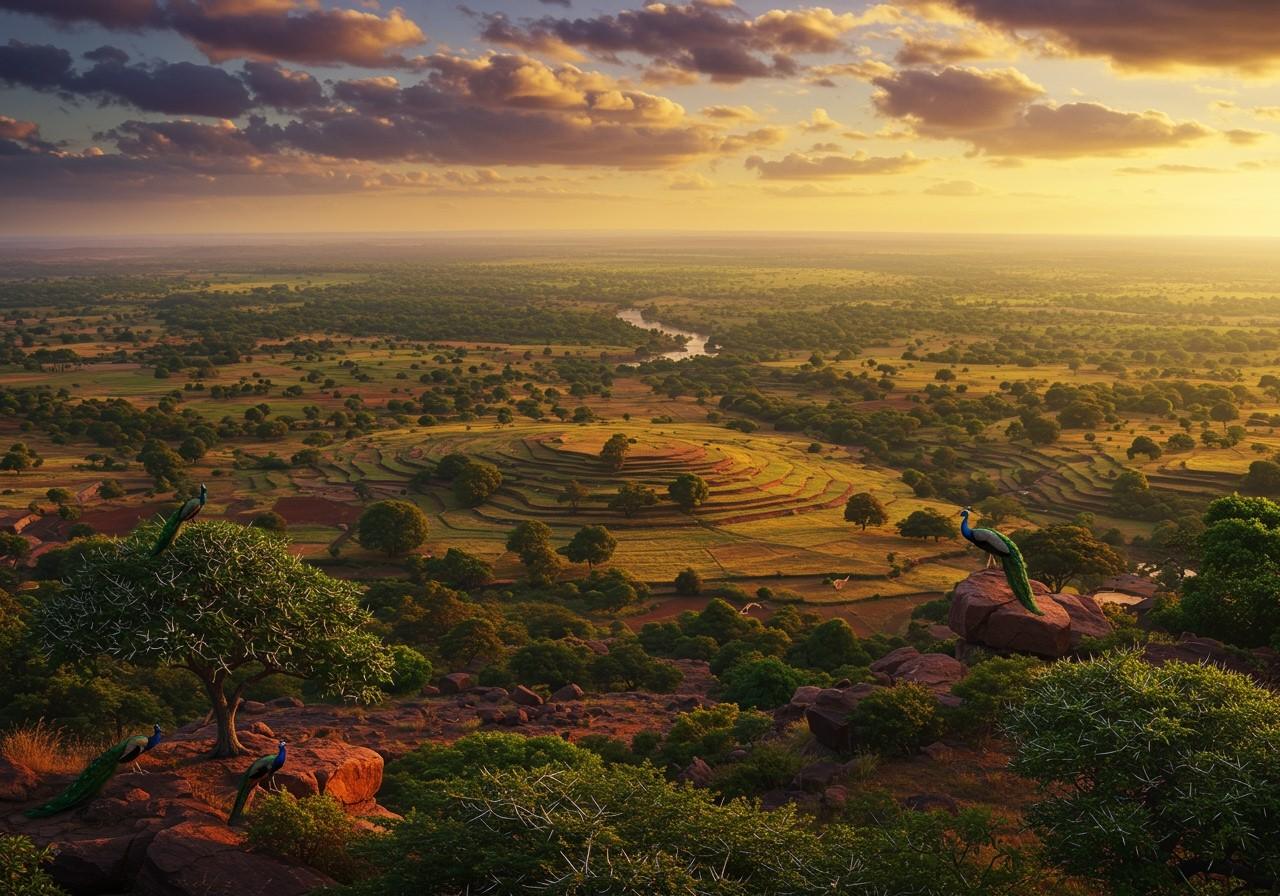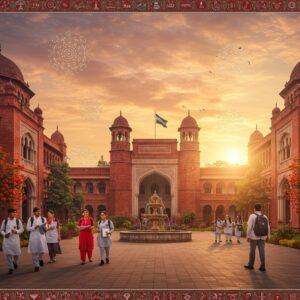
The Deccan Plateau, a vast expanse in southern India, boasts a unique environment shaped by its distinct climate and diverse vegetation. Understanding this landscape is crucial for appreciating its ecological importance and the livelihoods of the people who call it home. Let’s delve into the geographical features, climate, vegetation, and more about this remarkable region.
Geographical Features
The Deccan Plateau stretches across several Indian states, including Karnataka, Andhra Pradesh, Kerala, Tamil Nadu, Maharashtra, and Telangana. Its elevation varies from 100 to 1000 meters above sea level. This plateau is characterized by its rich basaltic lava soil, fertile yet prone to erosion. Important rivers such as the Godavari, Krishna, and Kaveri traverse the plateau, nurturing agriculture. The Western and Eastern Ghats significantly influence the region’s climate and plant life.
Climate of the Deccan Plateau
The Deccan Plateau experiences a climate ranging from semi-arid to tropical, marked by distinct wet and dry seasons. Summers are hot and dry, with temperatures often soaring above 40 degrees Celsius. The monsoon season delivers much-needed rainfall, although the amount varies across the plateau. Winters are mild, with temperatures rarely dipping below 10 degrees Celsius. The monsoon winds and the rain shadow effect of the Western Ghats play a key role in shaping the plateau’s climate. This rain shadow effect results in the plateau receiving less rainfall compared to coastal areas, typically between 900 to 1,500 mm annually.
Why the Deccan Plateau Receives Less Rainfall
The rain shadow effect of the Western Ghats is the primary reason for the Deccan Plateau’s lower rainfall. As moist monsoon winds from the Arabian Sea encounter the Western Ghats, they ascend and cool, releasing rainfall on the windward side. By the time these winds reach the Deccan Plateau, they have lost a significant amount of their moisture, leading to reduced rainfall. Its inland location also limits the influence of the Bay of Bengal monsoon winds.
Vegetation of the Deccan Plateau
The vegetation of the Deccan Plateau is dominated by drought-resistant trees and shrubs adapted to the semi-arid to tropical conditions. Common species include Acacia, Ziziphus, Prosopis, and Terminalia, which shed their leaves during the dry season to conserve water. The northern part, drier than the south, features scrub and thorn forests. The southern part, with higher rainfall, supports moist deciduous forests with trees like teak, sandalwood, and bamboo. The Western Ghats, with even greater rainfall, are cloaked in dense evergreen forests teeming with biodiversity.
Agriculture and Economic Activities
Agriculture is the mainstay of the Deccan Plateau’s economy. Common crops include cotton, sugarcane, rice, and millet. The fertile black soil, particularly in areas like Maharashtra, is ideal for cotton cultivation. Irrigation projects on rivers like the Krishna and Godavari enhance agricultural productivity.
The plateau is also abundant in minerals such as coal, iron ore, and bauxite, contributing significantly to the region’s economy. Traditional crafts and industries, like silk weaving in Karnataka and pottery in Andhra Pradesh, also play a vital role.
Environmental Challenges and Conservation Efforts
The Deccan Plateau faces environmental challenges including soil erosion, deforestation, and water scarcity. Rapid urbanization and industrialization have led to habitat loss and decreased biodiversity. Ongoing conservation efforts address these issues through afforestation programs, sustainable agriculture, and protected areas. Community involvement is essential for the success of these initiatives.
Connecting with the Deccan’s Sacred Flora through Poojn.in
Poojn.in offers authentic ritual items sourced from plants native to the Deccan Plateau, allowing you to conveniently uphold traditional practices. Our offerings include:
- Ashoka Tree Products: We offer pure Ashoka Chal (bark) powder from Saraca asoca, a sacred tree of the Deccan, in various quantities (100g – 1kg) for ritual and medicinal purposes. Learn more about the significance of the Ashoka tree in our blog post: Saptashrungi Devi: Legend, Myths, Stories, and Beliefs.
- Traditional Herbs: Discover essential Deccan herbs used in pujas and traditional practices in our Jaribooti (Ayurvedic Herbs) section. These herbs are carefully selected and ethically sourced.
- Complete Puja Kits: Our ready-to-use puja kits contain all the necessary items for specific rituals, featuring locally sourced Deccan ingredients, ensuring authenticity and convenience. Check out our Puja Kits section for more details.
- Sacred Items: Explore our extensive catalog of 186+ puja samagri products, including holy items crafted from regional materials, connecting you with the Deccan’s spiritual heritage.
Visit www.poojn.in to browse our complete selection of authentic ritual items from the Deccan region. We deliver these sacred materials directly to your doorstep, preserving their purity and traditional significance.
Prices start from ₹119.00 for authentic Deccan ritual items
Conclusion
The Deccan Plateau is a region rich in natural resources, cultural heritage, and economic opportunities. Its diverse climate and vegetation support a wide array of crops and industries. However, addressing challenges like soil erosion, deforestation, and water scarcity is crucial for maintaining the ecological balance. Conservation efforts and sustainable practices are essential for preserving this unique environment. By understanding the Deccan Plateau’s distinct characteristics, we can appreciate its significance and contribute to its long-term well-being.


